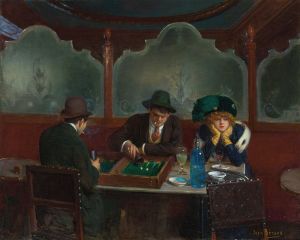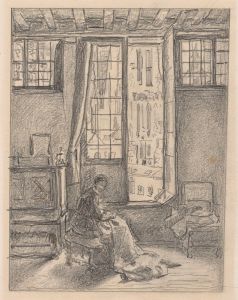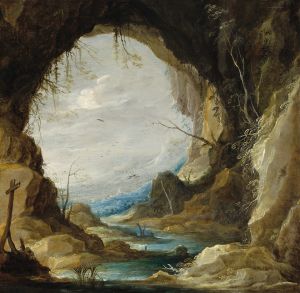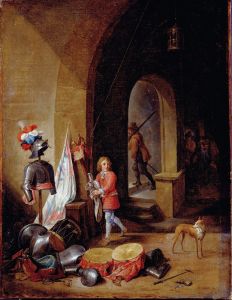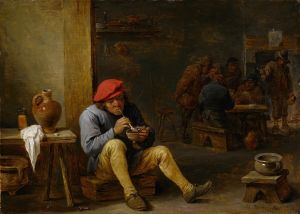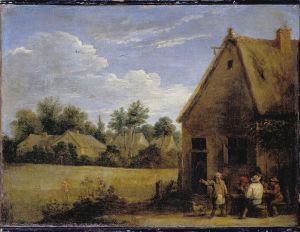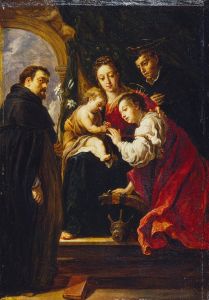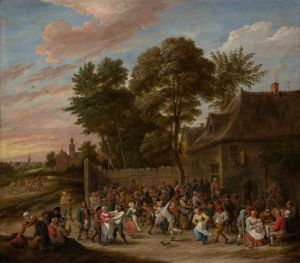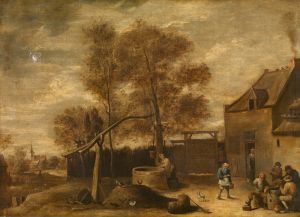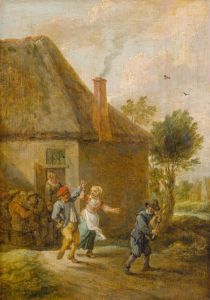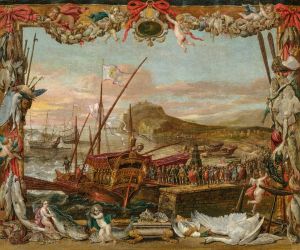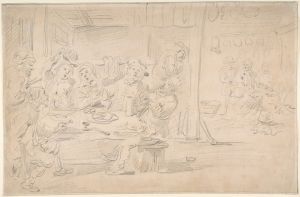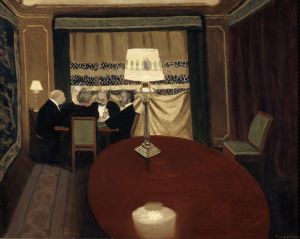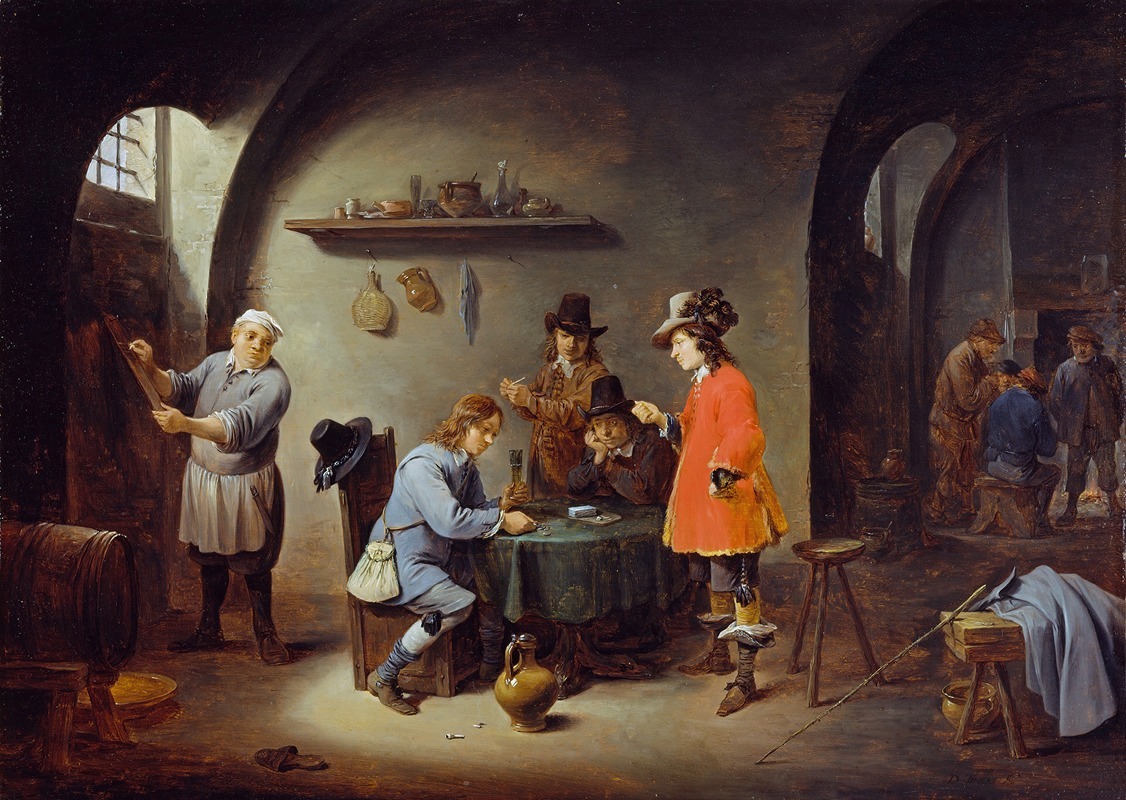
Gambling Scene at an Inn
A hand-painted replica of David Teniers The Younger’s masterpiece Gambling Scene at an Inn, meticulously crafted by professional artists to capture the true essence of the original. Each piece is created with museum-quality canvas and rare mineral pigments, carefully painted by experienced artists with delicate brushstrokes and rich, layered colors to perfectly recreate the texture of the original artwork. Unlike machine-printed reproductions, this hand-painted version brings the painting to life, infused with the artist’s emotions and skill in every stroke. Whether for personal collection or home decoration, it instantly elevates the artistic atmosphere of any space.
David Teniers the Younger, a prominent Flemish Baroque painter, created the artwork "Gambling Scene at an Inn" in the mid-17th century. Teniers, born in 1610 in Antwerp, was known for his genre scenes, landscapes, and depictions of peasant life. His works often provided a vivid portrayal of everyday activities, capturing the essence of 17th-century Flemish society.
"Gambling Scene at an Inn" is a quintessential example of Teniers' genre paintings. The scene is set in a rustic inn, a common social hub during that period, where people from various walks of life would gather. The painting depicts a lively and somewhat chaotic atmosphere, with a group of men engrossed in a game of cards. The expressions and postures of the figures are meticulously detailed, showcasing Teniers' skill in capturing human emotion and interaction.
The composition of the painting is carefully structured to draw the viewer's eye towards the central action. The use of light and shadow is particularly notable, with the illumination focusing on the gamblers, thereby highlighting their intense concentration and the stakes of the game. The background, though less detailed, provides context and depth, featuring other patrons engaged in different activities, such as drinking and conversing.
Teniers' use of color is both vibrant and naturalistic, contributing to the overall realism of the scene. The earthy tones of the inn's interior, combined with the varied hues of the characters' clothing, create a harmonious yet dynamic visual experience. This attention to detail extends to the depiction of the inn's furnishings and the various objects scattered around, which add to the authenticity of the setting.
The painting also reflects the social and cultural aspects of the time. Gambling was a popular pastime in 17th-century Flanders, often associated with both leisure and vice. Teniers' portrayal of this activity can be seen as a commentary on human behavior, highlighting themes of chance, risk, and the pursuit of fortune. The presence of different social classes within the scene also underscores the inn's role as a communal space where societal boundaries could be temporarily blurred.
David Teniers the Younger was heavily influenced by his father, David Teniers the Elder, and his father-in-law, Jan Brueghel the Elder. His works were highly regarded during his lifetime, earning him prestigious positions, including court painter to Archduke Leopold Wilhelm of Austria. "Gambling Scene at an Inn" exemplifies Teniers' mastery of genre painting and his ability to capture the vibrancy of everyday life.
Today, Teniers' works, including "Gambling Scene at an Inn," are celebrated for their historical significance and artistic merit. They offer valuable insights into the social customs and daily activities of 17th-century Flanders, making them important cultural artifacts. The painting is housed in various collections and continues to be studied and appreciated by art historians and enthusiasts alike.





